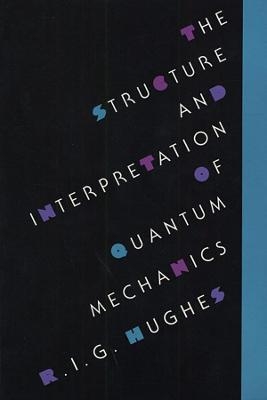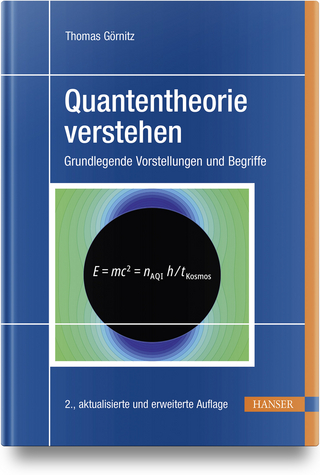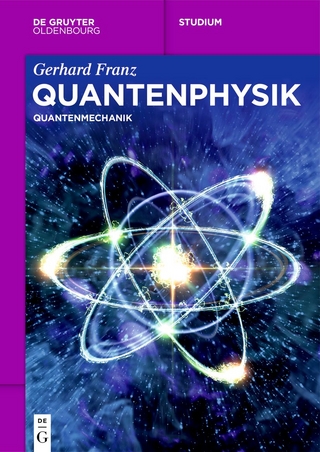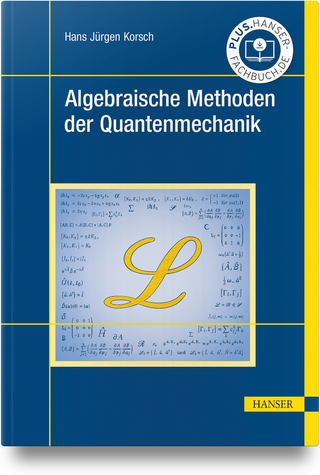
The Structure and Interpretation of Quantum Mechanics
Harvard University Press (Verlag)
978-0-674-84392-9 (ISBN)
This work provides an account of the philosophical foundations of quantum theory that should become a text for scientists and nonscientists alike. Hughes offers a detailed and accessible analysis for the Hilbert-space models used in quantum theory and explains why they are so successful. He goes on to show how the very suitability of Hilbert spaces for modelling the quantum world gives rise to deep problems of interpretation, and makes suggestions about how they can be overcome.
Preface Introduction. The Stern-Gerlach Experiment PART I THE STRUCTURE OF QUANTUM THEORY 1. Vector Spaces Vectors Operators Eigenvectors and Eigenvalues Inner Products of Vectors in R2 Complex Numbers The Space C2 The Pauli Spin Matrices Mathematical Generalization Vector Spaces Linear Operators Inner Products on V Subspaces and Projection Operators Orthonormal Bases Operators with a Discrete Spectrum Operators with a Continuous Spectrum Hilbert Spaces 2. States and Observables in Quantum Mechanics Classical Mechanics: Systems and Their States Observables and Experimental Questions States and Observables in Quantum Theory Probabilities and Expectation Values The Evolution of States in Classical Mechanics Determinism The Evolution of States in Quantum Mechanics Theories and Models 3. Physical Theory and Hilbert Spaces Minimal Assumptions for Physical Theory The Representation of Outcomes and Events The Representation of States Determinism, Indeterminism, and the Principle of Superposition Mixed States Observables and Operators Relations between Observables: Functional Dependence and Compatibility Incompatible Observables The Representational Capacity of Hilbert Spaces The Schrodinger Equation 4. Spin and Its Representation Symmetry Conditions and Spin States A Partial Representation of Spin in R2 The Representation of (Sa) in C2 Conclusion 5. Density Operators and Tensor-Product Spaces Operators of the Trace Class Density Operators Density Operators on C2 Pure and Mixed States The Dynamical Evolution of States Gleason's Theorem Composite Systems and Tensor-Product Spaces The Reduction of States of Composite Systems Part II The Interpretation of Quantum Theory 6. The Problem of Properties Properties, Experimental Questions, and the Dispersion Principle The EPR Argument Bohm's Version of the EPR Experiment The Statistical Interpretation Kochen and Specker's Example Generalizing the Problem The Bell-Wigner Inequality Hidden Variables Interpreting Quantum Theory: Statistical States and Value States 7. Quantum Logic The Algebra of Properties of a Simple Classical System Boolean Algebras Posets and Lattices The Structure of S(H) The Algebra of Events A Formal Approach to Quantum Logic An Unexceptionable Interpretation of Quantum Logic Putnam on Quantum Logic Properties and Deviant Logic 8. Probability, Causality, and Explanation Probability Generalized Two Uniqueness Results The Two-Slit Experiment: Waves and Particles The Two-Slit Experiment: Conditional Probabilities The Bell-Wigner Inequality and Classical Probability Bell Inequalities and Einstein-Locality Bell Inequalities and Causality Coupled Systems and Conditional Probabilities Probability, Causality, and Explanation 9. Measurement Three Principles of Limitation Indeterminacy and Measurement Projection Postulates Measurement and Conditionalization The Measurement Problem and Schrodinger's Cat Jauch's Model of the Measurement Process A Problem for Internal Accounts of Measurement Three Accounts of Measurement 10. An Interpretation of Quantum Theory Abstraction and Interpretation Properties and Latencies: The Quantum Event Interpretation The Copenhagen Interpretation The Priority of the Classical World Quantum Theory and the Classical Horizon Appendix A. Gleason's Theorem Appendix B. The Lyders Rule Appendix C. Coupled Systems and Conditionalization References Index
| Erscheint lt. Verlag | 1.5.1992 |
|---|---|
| Zusatzinfo | 71 line illustrations |
| Verlagsort | Cambridge, Mass |
| Sprache | englisch |
| Maße | 156 x 235 mm |
| Gewicht | 426 g |
| Themenwelt | Naturwissenschaften ► Physik / Astronomie ► Quantenphysik |
| Naturwissenschaften ► Physik / Astronomie ► Theoretische Physik | |
| Schlagworte | Quantenmechanik |
| ISBN-10 | 0-674-84392-4 / 0674843924 |
| ISBN-13 | 978-0-674-84392-9 / 9780674843929 |
| Zustand | Neuware |
| Haben Sie eine Frage zum Produkt? |
aus dem Bereich


